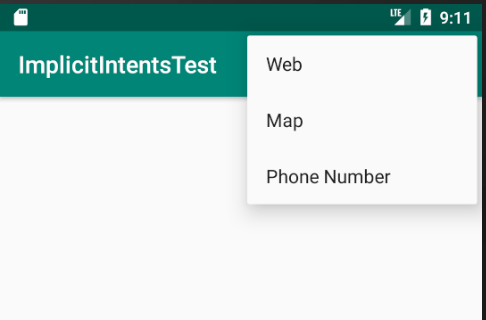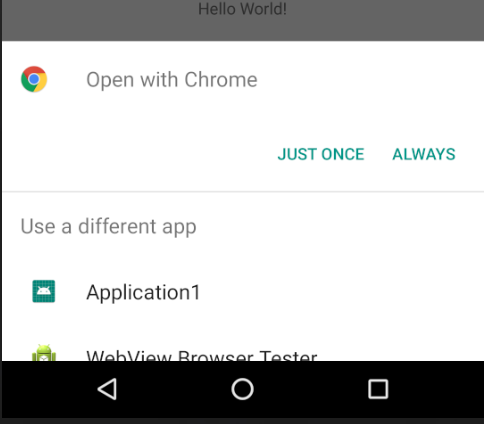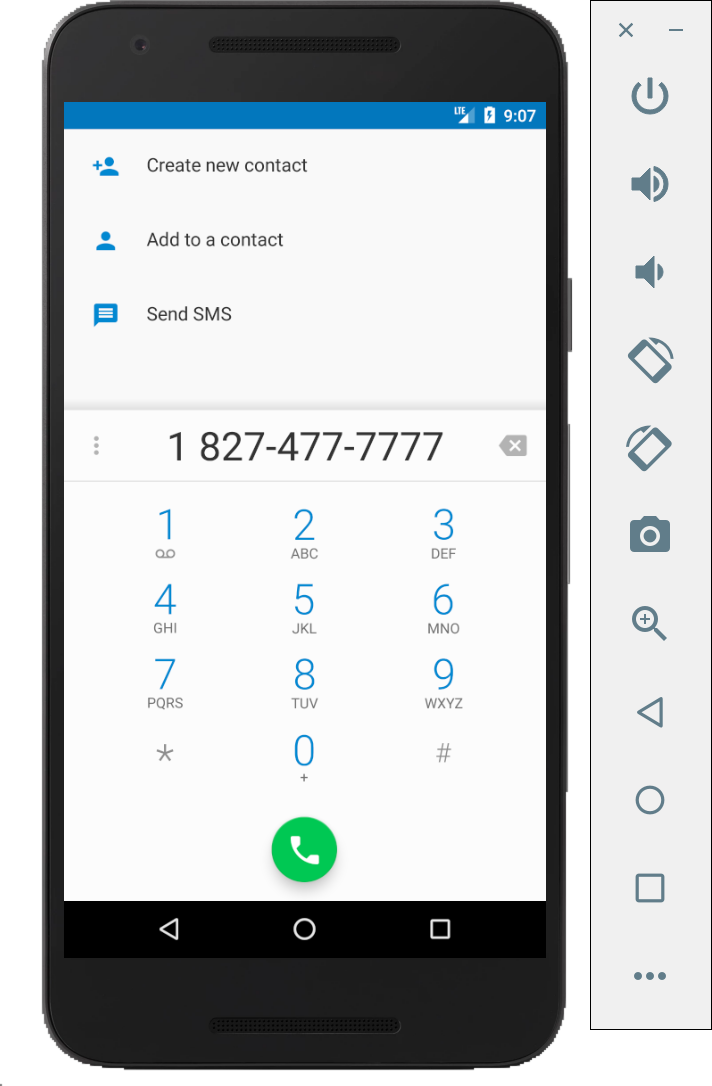Android平台Intent分为两种:显示Intent和隐式Intent
显式Intent会准确地告诉Android运行时需要激活哪个组件。举个例子,如果我想让别人帮忙买包饼干。显示Intent会说,可以帮我去xxx街的xxx便利店买包饼干吗。而隐式Intent则说,可以帮我买包饼干吗。隐式Intent仅指定操作。当我们使用隐式Intent的时候,一般是想使用我们程序中不存在的功能。如果我们的程序有这个功能,一般优先考虑使用显式Intent。因此,当我们使用隐式Intent的时候,Android会在我们的设备上寻找合适的功能响应我们的请求。
通过一个例子能更好的理解什么是隐式Intent
打开Android Studio,新建一个项目,项目的细节如下表所示
| Application name |
ImplicitIntentsTest |
| Company domain |
Use your website name |
| Kotlin support |
Yes |
| Form factor |
Phone and Tablet only |
| Minimum SDK |
API 23 Marshmallow |
| Type of activity |
Empty |
| Activity name |
MainActivity |
| Layout name |
activity_main |
| Backward compatibility |
Yes.AppCompat |
最后的效果图
 效果图
效果图
这里我不打算使用xml布局,而是使用代码动态生成菜单栏
MainActivity.kt代码
1
2
3
4
5
6
7
8
9
10
11
12
13
14
15
16
17
18
19
20
21
22
23
24
25
26
27
28
29
30
31
32
33
34
35
36
37
38
39
40
41
42
43
44
45
46
| package cn.com.sshpark.ch12implicitintents
import android.content.Intent
import android.net.Uri
import android.support.v7.app.AppCompatActivity
import android.os.Bundle
import android.view.Menu
import android.view.MenuItem
class MainActivity : AppCompatActivity() {
override fun onCreate(savedInstanceState: Bundle?) {
super.onCreate(savedInstanceState)
setContentView(R.layout.activity_main)
}
override fun onCreateOptionsMenu(menu: Menu?): Boolean {
menu?.add("Web")
menu?.add("Map")
menu?.add("Phone Number")
return super.onCreateOptionsMenu(menu)
}
override fun onOptionsItemSelected(item: MenuItem?): Boolean {
var m_uri: Uri
var m_intent: Intent = Intent()
when (item?.toString()) {
"Web" -> {
m_uri = Uri.parse("http://sshpark.com.cn")
m_intent = Intent(Intent.ACTION_VIEW, m_uri)
}
"Map" -> {
m_uri = Uri.parse("geo:40.7113399,-74.026346")
m_intent = Intent(Intent.ACTION_VIEW, m_uri)
}
"Phone Number" -> {
m_uri = Uri.parse("tel:18274777777")
m_intent = Intent(Intent.ACTION_DIAL, m_uri)
}
}
startActivity(m_intent)
return true
}
}
|
简单解释一下,onCreateOptionsMenu回调会在onCreate方法之后的某个时间被调用,它会创建一个简单的菜单栏。onOptionsItemSelected则会在用户点击的时候响应自定义的动作。
最后,程序运行效果为
 Web
Web
 Phone Number
Phone Number


